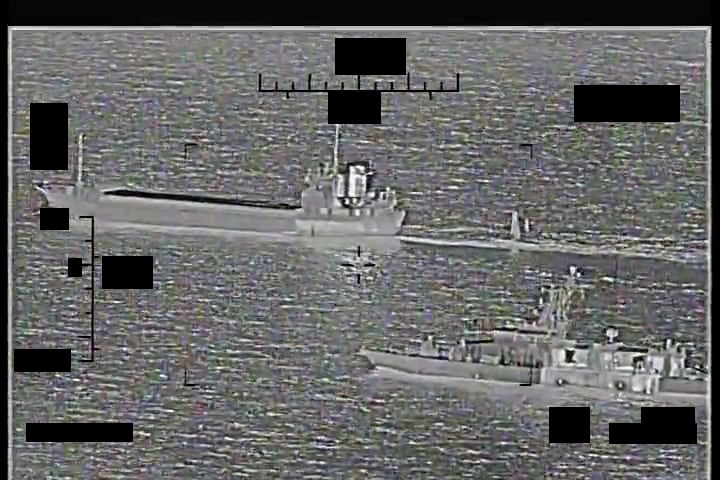[Editor’s note: This story was updated late Friday afternoon to include a statement from the U.S. Navy.]
DUBAI, United Arab Emirates — Iran’s navy seized two American sea drones in the Red Sea before letting them go Friday after U.S. destroyers and helicopters responded, officials said. It was the second such maritime incident in less than a week involving the Navy’s new drone fleet in the Mideast.
Iranian state television aired footage it said came from the deck of the Iranian navy’s Jamaran destroyer, where lifejacket-wearing sailors examined two Saildrone Explorers. They tossed one overboard as a U.S. warship could be seen in the distance.
State TV said the Iranian navy found “several unmanned spying vessels abandoned in the international maritime routes” Thursday.
RELATED

“After two warnings to an American destroyer to prevent possible incidents, Jamaran seized the two vessels,” state TV said. “After securing the international shipping waterway, the Naval Squadron No. 84 released the vessels in a safe area.”
It added: “The U.S Navy was warned to avoid repeating similar incidents in future,” it added.
The U.S. Navy countered that the unarmed Saildrone Explorers, operating near one another in international waters, were “taking unclassified photos of the surrounding environment while loitering in an assigned patrol area at least four nautical miles from the nearest maritime traffic lane,” according to the statement from U.S. Naval Forces Central Command/U.S. Fifth Fleet public affairs.
“The vessels posed no risk to naval traffic and had been operating in the general vicinity of the Southern Red Sea for more than 200 consecutive days without incident.”
When U.S. 5th Fleet detected the Iranian destroyer removing the vessels from the water at about 2 p.m. local time Sept. 1, the destroyers Nitze and Delbert D. Black — and two MH-60R Sea Hawks from Helicopter Maritime Strike Squadron 48 — responded to the incident. They called the Iranian destroyer over the radio and followed the vessel until it released the drones at 8 a.m. Friday, according to the statement.

The incident marks the second such incident in recent days as negotiations over Tehran’s nuclear deal with world powers hang in the balance.
The earlier incident involved Iran’s paramilitary Revolutionary Guard, not its regular navy, and occurred in the Persian Gulf. The Guard towed a Saildrone Explorer before releasing it as an American warship trailed it. Iran had criticized the U.S. Navy for releasing a “Hollywood” video of the incident, only to do the same Friday in the Red Sea incident.
U.S. 5th Fleet launched its unmanned Task Force 59 last year. Drones used by the Navy include ultra-endurance aerial surveillance drones, surface ships like the Sea Hawk and the Sea Hunter and smaller underwater drones that resemble torpedoes.
The 5th Fleet’s area of responsibility includes the crucial Strait of Hormuz, the narrow mouth of the Persian Gulf through which 20% of all oil passes. It also stretches as far as the Red Sea reaches near the Suez Canal, the waterway in Egypt leading to the Mediterranean, and the Bab el-Mandeb Strait off Yemen.
The region has seen a series of maritime attacks in recent years.
Off Yemen in the Red Sea, bomb-laden drone boats and mines set adrift by Yemen’s Houthi rebels have damaged vessels amid that country’s yearslong war. Near the United Arab Emirates and the Strait of Hormuz, oil tankers have been seized by Iranian forces. Others have been attacked in incidents the Navy blames on Iran.
Those attacks came about a year after then-President Donald Trump’s 2018 decision to unilaterally withdraw from Iran’s nuclear deal, in which sanctions on Tehran were lifted in exchange for it drastically limiting its enrichment of uranium.
Negotiations to revive the accord now hang in the balance. The U.S. cast doubt Friday on Iran’s latest written response over the talks.
Iran now enriches uranium closer than ever to weapons-grade levels as officials openly suggest Tehran could build a nuclear bomb if it wishes to. Iran has maintained its program is peaceful, though Western nations and international inspectors say Tehran had a military nuclear program up until 2003.
Associated Press journalist Mehdi Fattahi in Tehran, Iran, contributed to this report.








